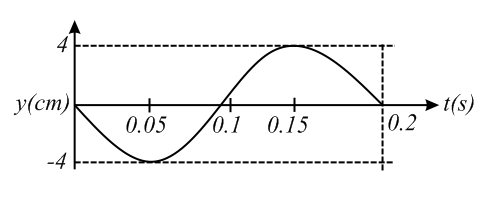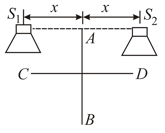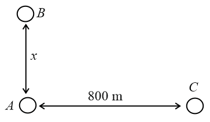HARD
Physics
IMPORTANT
Earn 100
For a certain transverse standing wave on a long string, an antinode is formed at and next to it, a node is formed at . The displacement of the string particle at is shown in the figure.


(a)Transverse displacement of the particle at and is .
(b)Transverse displacement of the particle at and is .
(c)Speed of the travelling waves that interfere to produce this standing wave is .
(d)The transverse velocity of the string particle at and is .
50% studentsanswered this correctly

Important Questions on Superposition and Standing Waves
MEDIUM
Physics
IMPORTANT
Two speakers are placed as shown in diagram.

Mark out the correct statement(s)
HARD
Physics
IMPORTANT
Two coherent waves represented by, and are superimposed. The two waves will produce,
MEDIUM
Physics
IMPORTANT
Two waves travel down the same string. These waves have the same velocity, frequency and wavelength but having different phase constants and and amplitudes and Mark the correct statement(s) for the resultant wave which is produced due to superposition of these two waves.
HARD
Physics
IMPORTANT
A radio transmitter at position operates at a wavelength of . A second, identical transmitter is located at a distance from the first transmitter, at position . The transmitter are phase locked together such that the second transmitter is lagging out of phase with the first. For which of the following values of will the intensity at be maximum.

MEDIUM
Physics
IMPORTANT
Following are equations of four waves :
(i) (ii) (iii) (iv)
Which of the following statements is/are correct?
MEDIUM
Physics
IMPORTANT
Two waves of equal frequency and velocity travel in opposite directions along the same path. The waves have amplitudes and Then:
HARD
Physics
IMPORTANT
A plane wave is incident on a surface. Equation of the reflected wave is: Then which of the following statements are correct?
HARD
Physics
IMPORTANT
A string is fixed at both ends and transverse oscillations with amplitude are excited. Which of the following statements are correct?
